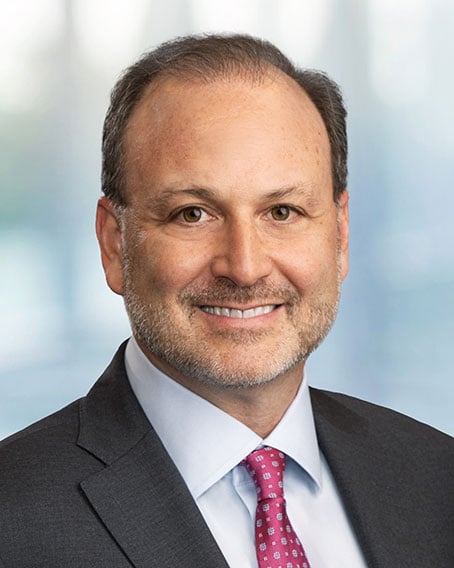This article by partners Mark Barnes and Gregory Levine was published by Law360 on August 4, 2017.
As part of an overarching initiative to update its regulatory oversight of digital health technologies, the U.S. Food and Drug Administration has announced new plans to streamline the development and availability of high quality digital health products. Acknowledging that “[d]igital health technology has brought new market participants into the medical devices space, and those participants have brought new innovation and manufacturing processes,” the FDA plans to modernize its regulation of digital health products by adopting a more efficient, risk-based approach to foster innovation and ensure that these products perform as intended. As part of that effort, the FDA has announced two new programs: the Digital Health Innovation Action Plan and the launch of its Digital Health Software Precertification (“Pre-Cert”) Pilot Program. These initiatives were previewed in a blog posting last month by FDA Commissioner Scott Gottlieb, as discussed here.
Digital Health Innovation Action Plan
The Digital Health Innovation Action Plan describes the agency’s planned approach, with associated timelines, for revising its regulation of digital health technology and for implementing the 21st Century Cures Act’s provisions related to software. For more information on the software-related provisions of 21st Century Cures Act, see here.
In addition, the plan describes efforts the Center for Devices and Radiological Health (“CDRH”) will undertake to strengthen its new digital health program by hiring staff using additional user fee funding. CDRH will also launch an “Entrepreneurs in Residence” program in the coming months to leverage the expertise of thought leaders and others with experience in software development to build the digital health capabilities within CDRH.
A major component of the plan includes issuing new draft and final guidance documents related to medical software. The plan sets forth the following schedule of expected guidance documents:
1. General 21st Century Cures Act Implementation Guidance. By the end of calendar year 2017, draft guidance with proposed interpretations of the medical software carve-outs from the definition of “device” under the Federal Food, Drug and Cosmetic Act (“FDCA”), including how those provisions affect existing FDA policies on:
- Mobile medical applications
- Medical device data systems used for the electronic transfer, storage, display or conversion of medical device data
- Medical image storage and communications devices, used to store, retrieve and transfer medical images
- Low-risk general wellness products
- Laboratory workflow
2. Clinical Decision Support Software. By the first quarter of 2018, draft guidance that defines and describes the types of clinical decision support software that is no longer under the FDA’s jurisdiction. As previously explained, industry has long awaited FDA guidance on this subject.
3. Multifunctionality. By the first quarter of 2018, draft guidance on the FDA’s oversight of products that combine both FDA-regulated and non-FDA-regulated software functionalities. As prescribed in the 21st Century Cures Act, the FDA will review nondevice software functionalities only to the extent they affect the software functionalities that are subject to FDA regulation.
4. Finalizing Guidance on Deciding When to Submit a 510(k) for a Software Change to an Existing Device. By the end of 2017, final guidance on how to determine whether a modification to a 510(k)-cleared software product requires submission of a new 510(k). The FDA issued draft guidance on this topic in August 2016.
5. Finalizing Guidance on Software as a Medical Device (“SaMD”): Clinical Evaluation by International Medical Device Regulators Forum (“IMDRF”). The IMDRF published a proposed document on the clinical evaluation of SaMD that the FDA adopted and issued as a draft guidance document for public comment in October 2016. The FDA expects that the IMDRF management committee will vote on the final document in September 2017. If the IMDRF adopts the final document, the FDA intends to issue a final guidance document that incorporates the document’s principles, as appropriate. It is not clear, however, to what extent public comment on the FDA draft guidance will affect the final guidance. Some of the feedback on the draft guidance criticized FDA’s proposed wholesale adoption of the IMDRF document, in part because it uses terminology and concepts the application of which is potentially confusing under the U.S. regulatory system.
Software Precertification Program
In a separate Federal Register notice, the FDA announced a Software Pre-Cert Pilot Program, a voluntary pilot program to allow the FDA to evaluate a new approach toward regulation of software in which FDA focuses primarily on the developer of the software or digital health technology, rather than the product itself. The FDA explains that this proposed shift in focus is spurred, in part, by the unique nature of digital health products, which undergo a faster iterative design, development and validation process than traditional hardware-based medical devices. The pilot program will explore whether and how precertified companies that perform high-quality software design and testing, and that have a proven track record of regulatory compliance, quality, organizational excellence and patient safety, may introduce a digital health product for marketing without FDA premarket review, or with decreased submission content or faster review timeframes. Firms that participate in the pilot program will have the opportunity to provide input on the development of the pre-cert program.
The FDA will select up to nine participants for participation in the pilot based on prespecified selection criteria, which include whether the company: (i) is developing or planning to develop software that meets the definition of a “device” under the FDCA, (ii) has an existing and demonstrated track record supported by performance metrics, (iii) will collect real-world postmarket performance data and provide them to the FDA, and (iv) will be available for real-time consultations with the FDA and for site visits from FDA officials.
Firms interested in participating in the pilot program can apply by submitting a statement of interest for participation beginning Aug. 1, 2017. The FDA plans to select its first participants and initiate the precertification program by Sept. 1, 2017.
Implications for Digital Health Software Developers
The FDA’s announcements on its plans for regulating digital health products provide further details on how the agency expects, consistent with the mandates of the 21st Century Cures Act, to continue to focus its regulation of software products on those that pose the highest risk to health, while exempting or lessening the degree of regulation applied to lower-risk digital health products. Developers of digital health products should pay careful attention to the FDA’s emerging policies in this area. Significant change, or at least clarification, may arise from these initiatives with respect to such digital health products as clinical decision support tools, laboratory workflow systems and software combining regulated and nonregulated functionalities. For those developers whose products will be subject to FDA regulation, the pre-cert pilot program has the potential to result in a novel approach to premarket review that may eventually lessen regulatory burdens.
Stay Up To Date with Ropes & Gray
Ropes & Gray attorneys provide timely analysis on legal developments, court decisions and changes in legislation and regulations.
Stay in the loop with all things Ropes & Gray, and find out more about our people, culture, initiatives and everything that’s happening.
We regularly notify our clients and contacts of significant legal developments, news, webinars and teleconferences that affect their industries.


